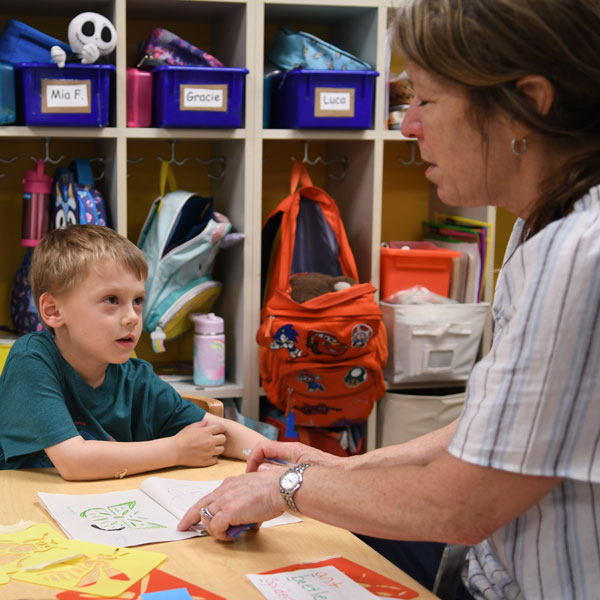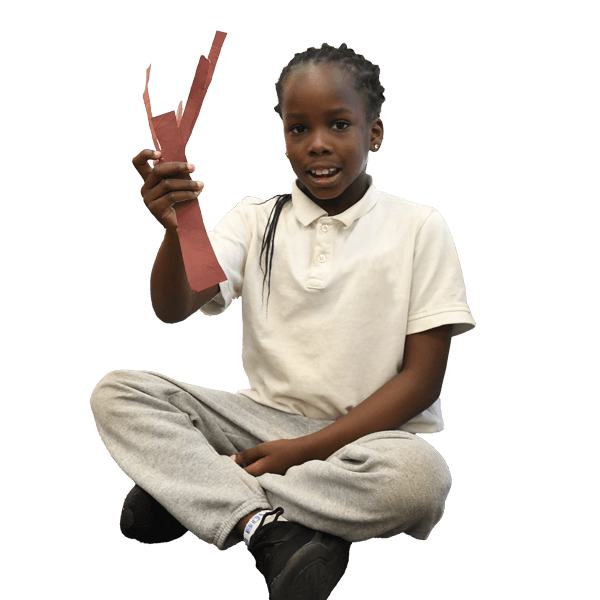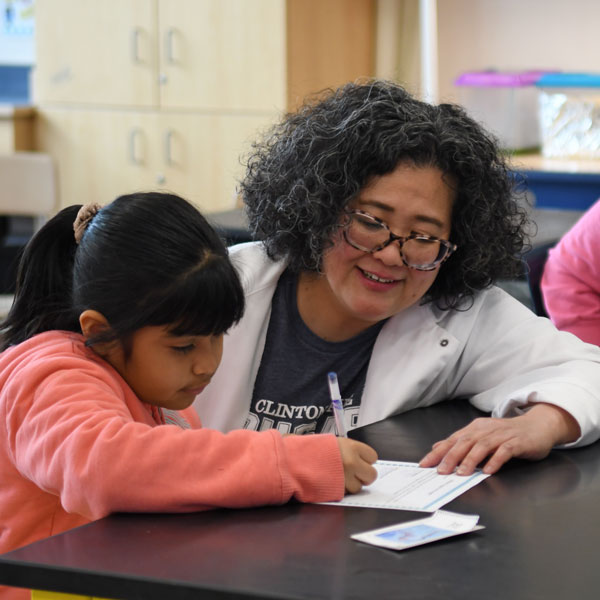Child Development
The Foundation for Successful Learning Outcomes
Knowing the capabilities of students in your classroom is vital for meeting their cognitive and social-emotional needs.
Learning is most natural, engaging and effective when educators align instruction with how children’s brains develop and meet students at their level of knowledge, skills and interests. Play-based learning works because it presents content and skills in developmentally appropriate ways, gives students a chance to apply what they are learning and gives educators opportunities to observe student learning in a way that allows for responsive scaffolding.


Why Developmental Alignment Matters
Meeting children where they are developmentally sets them up for success.
While kindergarteners will not be able to grasp how drought affects crops in Sudan, they can easily understand–and see first-hand–how their classroom garden needs water to grow.
Familiar and concrete concepts are in keeping with a kindergartener’s brain development, while fifth graders are able to think and work more abstractly, taking what they know and applying it to worlds and concepts that they may not have experienced first-hand.
The Power of Appropriate Expectations
Children learning to hold a pencil can’t write paragraphs yet. Kindergarteners will grasp concrete concepts like needing to water their classroom garden, while fifth graders can think abstractly about drought in distant regions.
Developmentally appropriate, hands-on learning builds solid understanding.

Learning feels joyful, natural, and engaging rather than forced
Academic skills and knowledge develop alongside social-emotional growth
Standards are achieved through age-appropriate pedagogy

Ages 4-7: Building the Foundation
In the early years, children separate from family, join a classroom community, and experience rapid brain growth. Play is the natural way they learn, regulate emotions, and connect with others.
Benefits of play-focused learning at this stage:
- Strengthens brain pathways through sensory, motor, and social experiences
- Builds executive function skills like memory, focus, and flexibility
- Grows vocabulary through role play, read-alouds, and peer interaction
- Supports emotional regulation through sharing, turn-taking, and games
- Makes academics relevant by connecting to family, school, and community life
Ages 8-11: Expanding Horizons
Children ages 8-11 still benefit deeply from play. Play and inquiry deepen academic skills, encourage abstract thinking, and make real-world connections.
Key features of playful learning in later elementary years:
- Encourages curiosity about how and why things work
- Provides multiple ways to access and demonstrate learning
- Balances independence with group collaboration
- Builds resilience by normalizing mistakes as part of learning
- Connects disciplines through real-world exploration and problem-solving


Creating Safe and Supportive Classrooms
No matter the age, children need to feel safe in order to learn and thrive. Beyond physical safety, children need accepting and supportive environments where they feel understood.
Children thrive when classrooms are:
- Accepting and supportive environments
- Respectful of individual stories and cultural backgrounds
- Places where students feel seen, heard, and valued
Further Reading
We highly recommend the following resources for more comprehensive information on child development in the classroom:
Books
- Yardsticks: Child and Adolescent Development, Ages 4–14
— Chip Wood - Making Schools Work: Bringing the Science of Learning to Joyful Classroom Practice
— Kathy Hirsh-Pasek, et al.